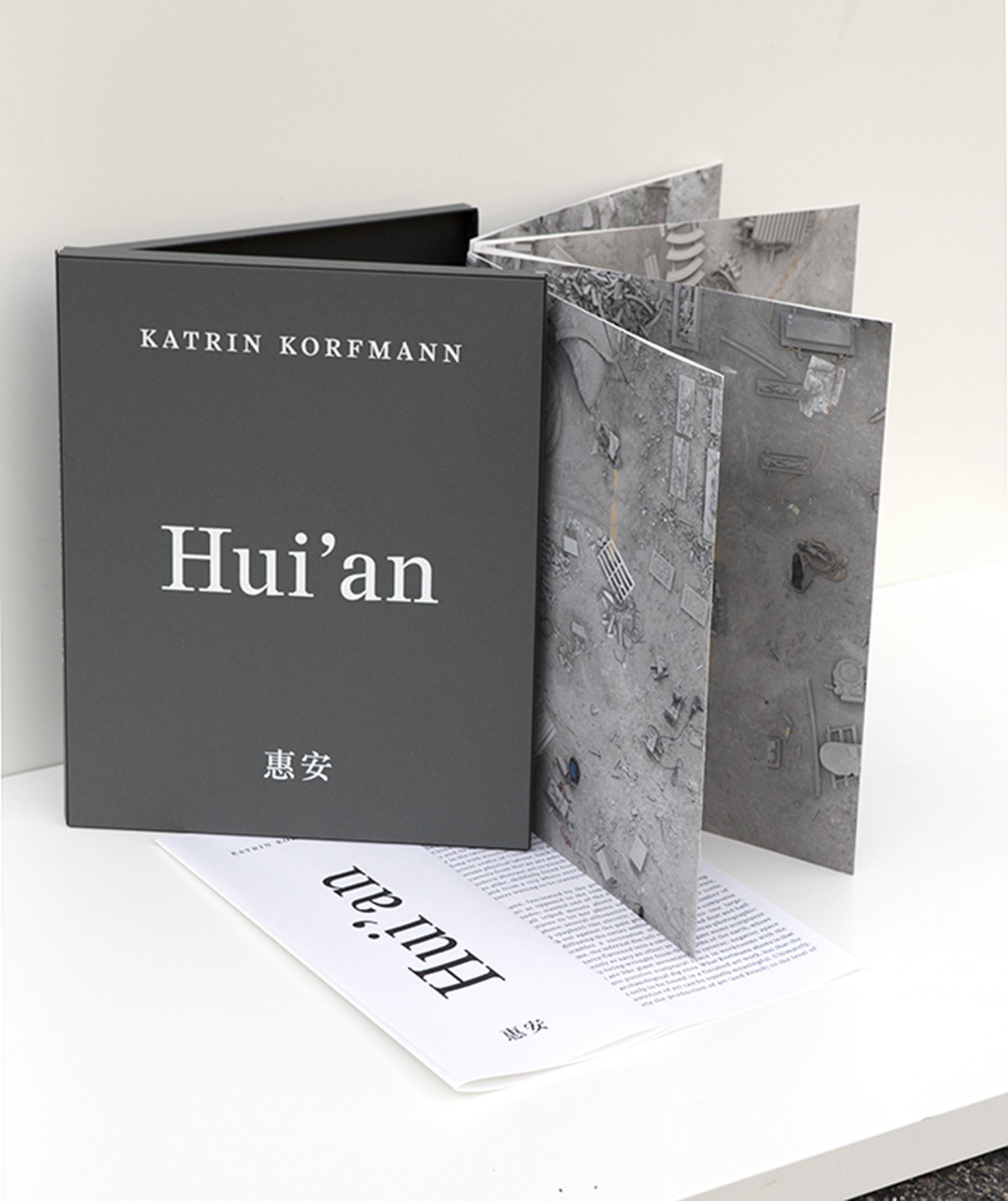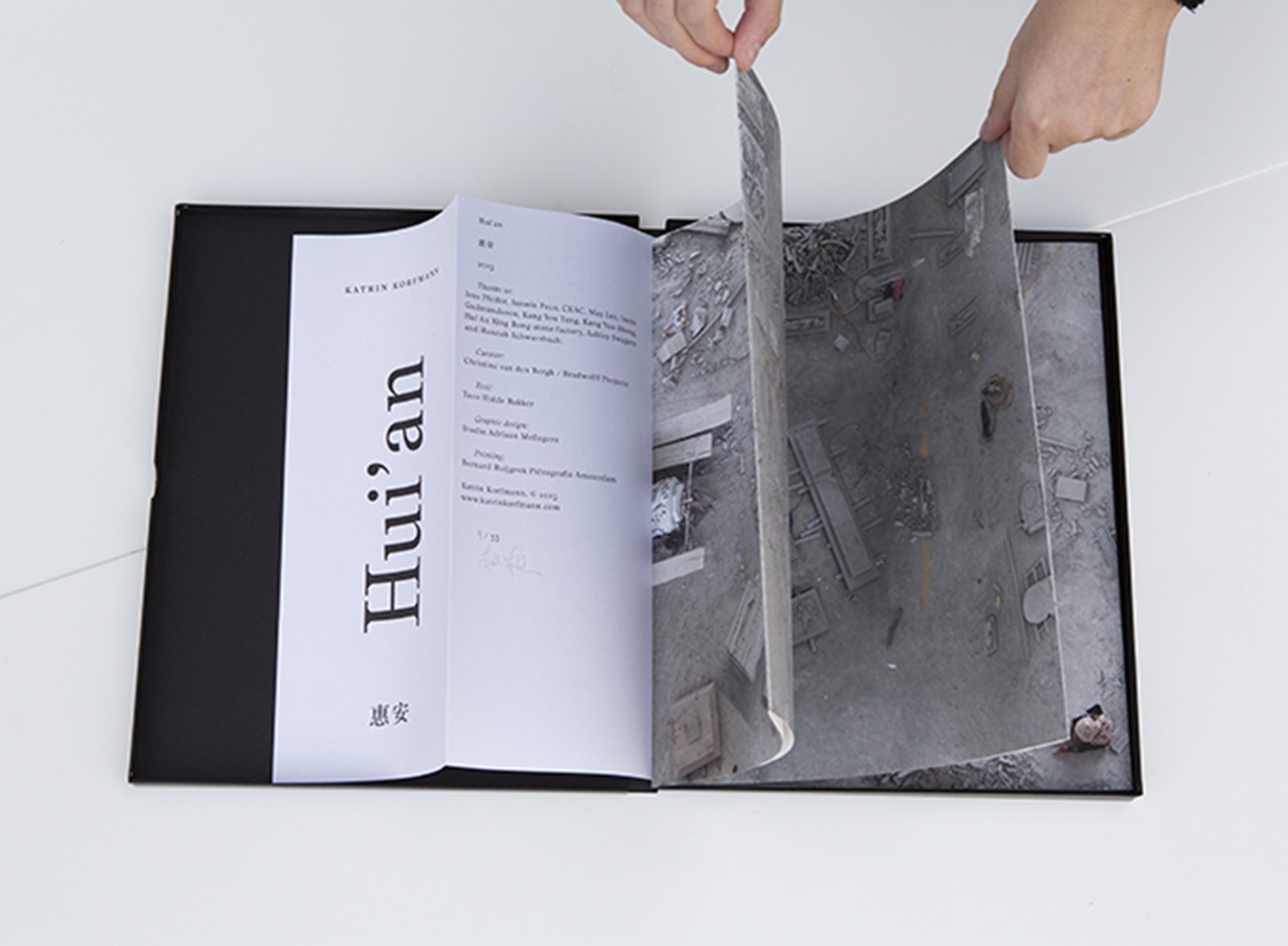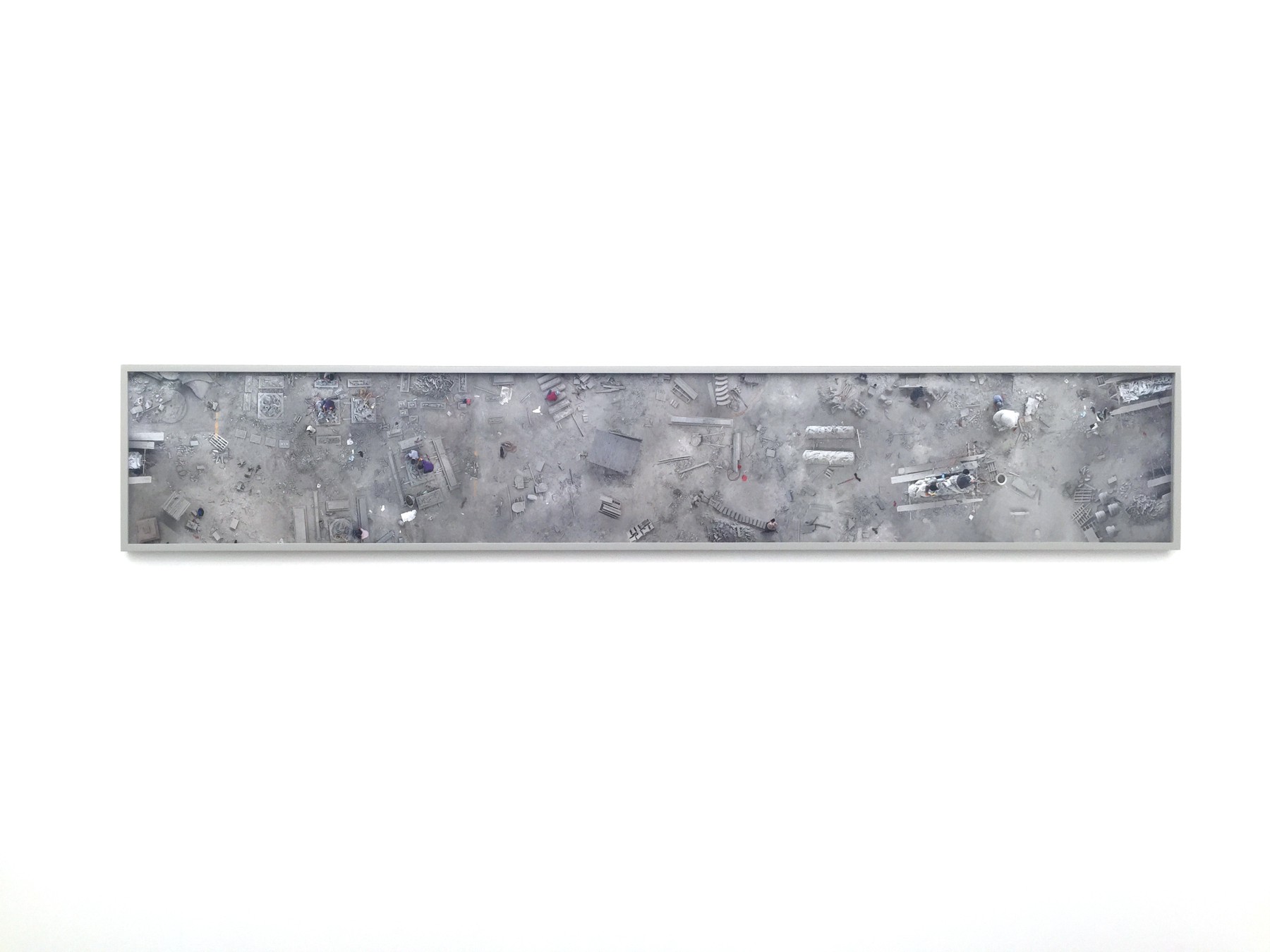author: Taco Hidde Bakker
graphic design: Studio Adriaan Mellegers
specs: accordion artist book, Piezography, 35 x 28 cm (closed), 35 x 225 cm (open)
publisher: Bradwolff Projects
year: 2015
… Katrin Korfmann, fascinated by the process of industrial manufacturing of art as opposed to the romantic notion of the lonely artist in his studio, scanned one of the stone workshops in Hui’an, moving her tall tripod meters above the dusty floor and half-finished sculptures to let her photo camera observe the carving process from above; several silhouettes of male and female carvers, surrounded by spaghetti-like electric cables powering their tools, hesitantly stick out against the pale grey of the endless number of dust particles diffusing the entire ambiance. Korfmann’s composite panorama assembles a succession of moments into one large, panoramic frame, the infernal din left out, stones and dust and half-finished sculptures flattened into a smooth, seamless photographic surface, apparently as easy an effort as the elegant stone sculptures appear, that are being wrought from the depths of the earth, whose stone quarries are like giant mountains in reverse: negative space transformed into positive sculptural space in workrooms with the appearance of archaeological dig sites. What Korfmann shows is that meaning is not only to be found in a finished art work, but that the anterior and posterior of art can be equally meaningful. Ultimately, Hui’an transports the production of art (and kitsch) to the level of art itself.
(from: Hui’an by Taco Hidde Bakker, 2015)

author: Taco Hidde Bakker
graphic design: Studio Adriaan Mellegers
specs: accordion artist book, Piezography, 35 x 28 cm (closed), 35 x 225 cm (open)
publisher: Bradwolff Projects
year: 2015
… Katrin Korfmann, fascinated by the process of industrial manufacturing of art as opposed to the romantic notion of the lonely artist in his studio, scanned one of the stone workshops in Hui’an, moving her tall tripod meters above the dusty floor and half-finished sculptures to let her photo camera observe the carving process from above; several silhouettes of male and female carvers, surrounded by spaghetti-like electric cables powering their tools, hesitantly stick out against the pale grey of the endless number of dust particles diffusing the entire ambiance. Korfmann’s composite panorama assembles a succession of moments into one large, panoramic frame, the infernal din left out, stones and dust and half-finished sculptures flattened into a smooth, seamless photographic surface, apparently as easy an effort as the elegant stone sculptures appear, that are being wrought from the depths of the earth, whose stone quarries are like giant mountains in reverse: negative space transformed into positive sculptural space in workrooms with the appearance of archaeological dig sites. What Korfmann shows is that meaning is not only to be found in a finished art work, but that the anterior and posterior of art can be equally meaningful. Ultimately, Hui’an transports the production of art (and kitsch) to the level of art itself.
(from: Hui’an by Taco Hidde Bakker, 2015)

author: Taco Hidde Bakker
graphic design: Studio Adriaan Mellegers
specs: accordion artist book, Piezography, 35 x 28 cm (closed), 35 x 225 cm (open)
publisher: Bradwolff Projects
year: 2015
… Katrin Korfmann, fascinated by the process of industrial manufacturing of art as opposed to the romantic notion of the lonely artist in his studio, scanned one of the stone workshops in Hui’an, moving her tall tripod meters above the dusty floor and half-finished sculptures to let her photo camera observe the carving process from above; several silhouettes of male and female carvers, surrounded by spaghetti-like electric cables powering their tools, hesitantly stick out against the pale grey of the endless number of dust particles diffusing the entire ambiance. Korfmann’s composite panorama assembles a succession of moments into one large, panoramic frame, the infernal din left out, stones and dust and half-finished sculptures flattened into a smooth, seamless photographic surface, apparently as easy an effort as the elegant stone sculptures appear, that are being wrought from the depths of the earth, whose stone quarries are like giant mountains in reverse: negative space transformed into positive sculptural space in workrooms with the appearance of archaeological dig sites. What Korfmann shows is that meaning is not only to be found in a finished art work, but that the anterior and posterior of art can be equally meaningful. Ultimately, Hui’an transports the production of art (and kitsch) to the level of art itself.
(from: Hui’an by Taco Hidde Bakker, 2015)
